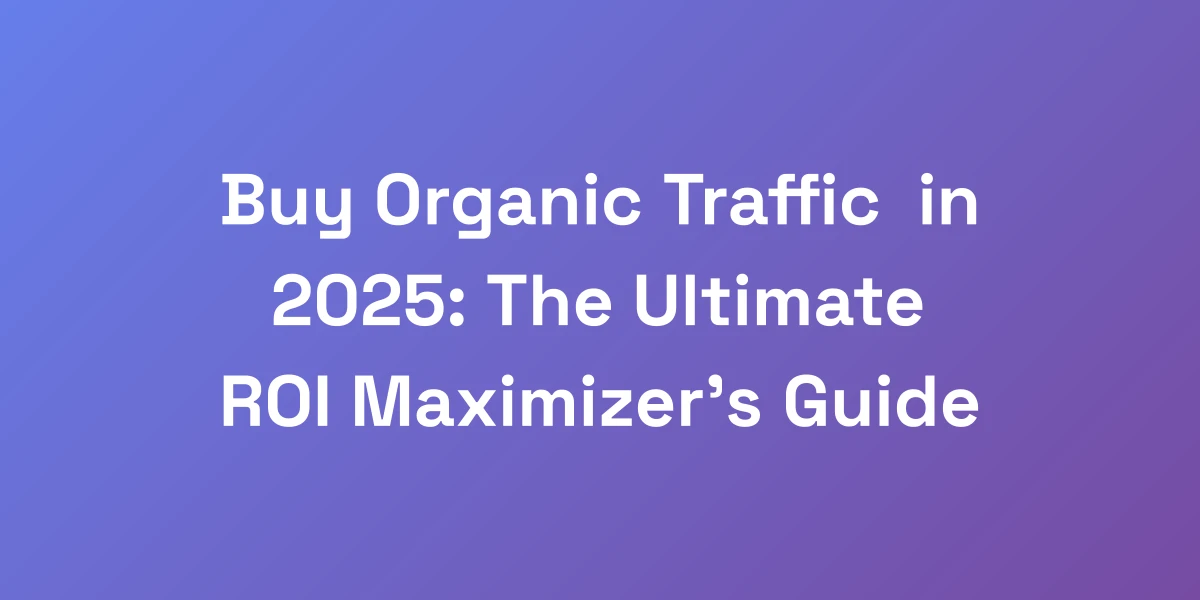
Find Competitors’ Backlinks: The Ultimate 2025 Spy Guide
Mar 12, 2025 | By [email protected]
Introduction
Ever feel like you’re playing catch-up in the SEO game? We’ve got a secret weapon that most folks overlook – competitor backlink analysis.
Your rivals are sitting on a goldmine of backlink opportunities, and most don’t even know how to tap into it. We’ve personally used competitor backlink analysis to 10x our site’s authority in under six months. But here’s the kicker: it’s not about copying what they do. It’s about outsmarting them.
Think about it – understanding where your competitors get their links can unlock new pathways to SEO success. It’s like having a map to hidden treasures that others have charted but didn’t fully exploit.
In this guide, we’ll walk you through the exact steps to uncover, analyze, and ethically “steal” your competitors’ best backlinks using both free and paid tools. No fluff, no filler – just actionable strategies that are set to dominate in 2025.
Why Competitor Backlink Analysis is Your Secret Weapon
The Real Impact of Backlinks on Rankings
Backlinks have long been a cornerstone of SEO, and they’re still crucial in 2025. According to data from Backlinko via Exploding Topics, pages that rank #1 on Google have, on average, 3.8 times the number of backlinks compared to those in positions 2 through 10. That’s a game-changer.
Why? Because backlinks signal to search engines that your content is valuable and trustworthy. Each backlink is like a vote of confidence from another site, boosting your site’s authority.
But it’s not just about quantity. Quality matters immensely. A single link from a high-authority site can be more impactful than dozens of low-quality links.
So, how do you leverage this? By analyzing your competitors’ backlink profiles, you can identify which links are propelling them forward and strategize how to secure similar or even better ones for your own site.
Why Traditional Link Building is Dead
Traditional link building methods are becoming less effective. Gone are the days when you could simply submit directories and harvest countless backlinks. Google’s algorithms have evolved, valuing genuine, high-quality links over any quantity.
Moreover, many traditional link building tactics now result in penalties rather than rewards. The focus has shifted to meaningful relationships and valuable content that naturally earns backlinks.
This is where competitor backlink analysis shines. Instead of relying on outdated methods, we focus on strategic insights derived from your competitors’ success, ensuring your link building efforts are both effective and sustainable.
The Competitive Intelligence Advantage
Imagine having a detailed blueprint of your competitors’ backlink strategies. This is the essence of competitive intelligence in SEO. By understanding where your competitors get their links, you can pinpoint opportunities that might have otherwise gone unnoticed.
This advantage allows you to:
- Identify high-authority sites that are relevant to your niche
- Discover content gaps and opportunities
- Develop strategies to secure high-quality backlinks
- Stay ahead of the competition by continuously adapting to their tactics
With this intelligence, you’re not just reacting to the SEO landscape; you’re shaping it to your advantage.
Tools You’ll Need (Free & Paid Options)
To dive deep into competitor backlink analysis, you’ll need the right set of tools. Whether you’re looking for affordable SEO services or willing to invest, there are options available to suit your needs.
- Ahrefs – Offers a comprehensive backlink database and detailed site audit capabilities. Perfect for in-depth analysis and uncovering nuanced backlink strategies.
- Majestic SEO – Known for its historical backlink data and the ability to identify toxic links. Ideal for understanding the context and quality of backlinks.
- SEMrush – Provides robust competitor research features and real-time backlink updates. Essential for keeping track of how your competitors are evolving their link profiles.
- Linkody – An affordable option for real-time backlink tracking and integration with Google Analytics. Great for small businesses and startups.
- Ubersuggest – A straightforward tool for getting an overview of your competitors’ backlinks. Perfect for beginners who need a simple interface.
Each tool has its strengths, and often, the best results come from using a combination of these tools, including AI tools for SEO, to get a comprehensive view of your competitors’ backlink strategies.
How to Identify Your Most Valuable Competitors
Not all competitors are created equal. Focusing on the right ones can make the difference between an effective link building strategy and a wasted effort. Here’s how we determine which competitors are truly worth spying on.
The Domain Authority Sweet Spot
The first step is identifying competitors with a domain authority similar to or slightly higher than yours. These are the sites that are likely to be within reach if you can replicate or surpass their backlink strategies.
- Use tools like Ahrefs or SEMrush to check domain authority.
- Focus on competitors who are ranking well for your target keywords.
- Avoid targeting sites with dramatically higher authority, as the effort required to secure backlinks from them can be disproportionately high.
Using Search Footprints to Find Hidden Competitors
Sometimes, direct competitors aren’t the only threats. Hidden competitors, those who share your target audience but aren’t immediately obvious, can also be valuable to analyze.
- Look beyond obvious competitors by searching for your top keywords and seeing who else ranks.
- Use search footprint analysis to uncover competitors who might have intersecting audiences.
- These hidden competitors can provide unique backlink opportunities that more obvious competitors might not expose.
Analyzing Search Intent Alignment
Aligning with the right search intent ensures that the backlinks you acquire are not only high-quality but also relevant to your audience.
- Map out the search intent for your primary keywords – informational, navigational, transactional, or commercial.
- Analyze if your competitors’ backlinks align with this intent.
- Seek out similar backlinks that can naturally fit within the context of your content.
Creating Your Competitor Hit List
Now that you know how to identify valuable competitors, it’s time to create your hit list.
- Compile a list of 5-10 direct and hidden competitors.
- Ensure each competitor is relevant and shares similar domain authority.
- Regularly update your list as your niche evolves and new competitors emerge.
Red Flags to Watch Out For
Not every competitor is a good proxy for backlink opportunities. Be mindful of potential red flags that indicate a site may not be worth targeting:
- Excessive low-quality backlinks, which could signal black hat practices.
- Recent significant drops in domain authority, which might indicate penalties.
- Irrelevant backlink profiles that do not align with your niche.
Stay vigilant to ensure your efforts are directed towards the right targets.
Advanced Backlink Discovery Techniques
Traditional backlink analysis tools only scratch the surface. To truly excel with automated SEO optimization, we need to uncover deeper patterns and relationships between links. Here’s how we elevate our discovery game.
Leveraging Ahrefs Like a Pro
Ahrefs remains a powerhouse for backlink analysis. But to harness its full potential, you need to go beyond the basics.
- Use the Content Explorer feature to find the most linked-to content in your niche.
- Filter backlinks by type – such as dofollow, nofollow, or sponsored – to understand their relevance.
- Analyze the anchor texts used by competitors to identify potential keyword targets.
These advanced techniques help you pinpoint exactly which backlinks to target and replicate.
Advanced Moz Link Explorer Tactics
Moz’s Link Explorer offers unique insights that can complement Ahrefs.
- Utilize the “Linking Domains” feature to see which domains are linking to your competitors but not to you
- Assess the Spam Score of backlinks to ensure you’re targeting high-quality links
- Explore the “Top Pages” metric to see which pages on competitor sites are earning the most backlinks
These tactics allow for a more nuanced understanding of your competitors’ backlink profiles.
Combining Multiple Data Sources
Relying on a single tool can limit your insights. By combining data from multiple sources, including AI SEO tools, you gain a comprehensive view of backlink opportunities.
- Cross-reference data from Ahrefs, Moz, and SEMrush to eliminate discrepancies and validate backlink quality
- Use Google Analytics to track the performance of acquired backlinks and adjust your strategy accordingly
- Integrate data sources to identify unique link opportunities that no single tool can uncover alone
This combined approach ensures you’re not missing out on any critical backlink opportunities.
Finding Second-Tier Link Opportunities
First-tier links are just the beginning. Second-tier link opportunities can provide additional layers of SEO benefits.
- Identify sites that are linking to your competitors’ backlinks but not directly to your site
- Reach out to those sites with your own high-quality content, offering them a reason to link to you as well
- Leverage relationships with sites from first-tier opportunities to gain introductions to second-tier opportunities
This method broadens your backlink profile and enhances your site’s authority from multiple angles.
Uncovering Link Networks and Patterns
Understanding the link networks and patterns of your competitors can unlock hidden opportunities and reveal strategic insights.
- Map out the network of sites linking to your competitors to identify potential new link sources
- Analyze the patterns of how and when competitors acquire backlinks to predict future link-building opportunities
- Identify clusters of related sites that frequently link to each other, providing a strategic advantage in approaching them
By deciphering these networks and patterns, you can strategically plan your backlink acquisition efforts for maximum impact.
Qualifying and Prioritizing Backlink Opportunities
Finding backlinks is one step; knowing which ones to pursue is another. We’ve developed a scoring system using auto SEO software that helps identify the highest-ROI link opportunities in minutes.
The key is to look beyond just domain authority. You need to consider factors like relevancy, traffic potential, and acquisition difficulty.
The VRAT Scoring System
Our VRAT system stands for Value, Relevancy, Authority, and Trustworthiness. This framework helps prioritize backlinks based on their potential impact.
- Value: How much traffic can this link drive to your site?
- Relevancy: Is the linking site relevant to your niche?
- Authority: Does the site have high domain and page authority?
- Trustworthiness: Is the site reputable and free from spammy backlinks?
By scoring each potential backlink against these criteria, you can quickly determine which opportunities are worth pursuing.
Red Flags and Deal Breakers
Not all backlinks are created equal. Here are some red flags to watch out for:
- Sites with high spam scores
- Links embedded in irrelevant or low-quality content
- Excessive use of exact-match anchor text, which can signal manipulative linking practices
These deal breakers help ensure that your backlink profile remains clean and reputable, avoiding potential penalties from search engines.
Evaluating Link Relevancy
Relevancy is crucial for SEO. A backlink from a relevant site is much more valuable than one from a completely unrelated niche.
- Assess the topical relevance of the linking site to your own content
- Check if the linking page relates directly to the content it’s linking to
- Prioritize links from sites that share a similar audience and subject matter
Relevant backlinks not only boost your SEO but also drive targeted traffic to your site.
Assessing Acquisition Difficulty
Not all backlinks are easy to obtain. Assessing the difficulty beforehand saves time and resources.
- Consider the competitiveness of the site’s backlink acquisition
- Evaluate the quality and effort required to secure the link
- Balance high-value opportunities with those that are more achievable in the short term
This assessment helps you prioritize your efforts where they will yield the best returns.
Creating Your Priority Matrix
Once you’ve scored potential backlinks, organize them into a priority matrix to streamline your outreach efforts.
- High Value & High Relevancy – Top priority
- High Value & Low Relevancy – Secondary priority
- Low Value & High Relevancy – Tertiary priority
- Low Value & Low Relevancy – Lowest priority
This matrix helps you focus on the most impactful backlinks first, ensuring efficient use of your resources.
Proven Strategies to Acquire Competitor Backlinks
Here’s where the rubber meets the road. Getting the same backlinks as your competitors isn’t about copying their tactics – it’s about doing them better.
We’ve tested dozens of approaches, and here are three that consistently deliver results. The key is personalizing your approach based on the link type. Some links require relationship building, others need content creation, and some just need cold hard cash. Here’s when and how to use each strategy effectively.
The Skyscraper Technique 2.0
The Skyscraper Technique involves creating superior content to earn high-quality backlinks, but we’ve taken it up a notch.
- Identify the best content in your niche using tools like Ahrefs and SEMrush.
- Create a more comprehensive, up-to-date, and engaging version of that content.
- Promote your content aggressively by reaching out to sites that linked to the original.
- Monitor the performance and continuously update your content to keep it relevant.
This enhanced technique not only attracts backlinks but also positions your content as the definitive resource in your field.
Resource Page Link Building
Resource pages are curated lists of valuable links within a specific niche. Targeting these can be highly effective for acquiring quality backlinks.
- Search for resource pages related to your industry using search queries like “keyword + resources” or “keyword + useful links”.
- Create a list of relevant resource pages and analyze their backlink profiles.
- Reach out to the site owners with a personalized pitch highlighting why your resource is a valuable addition to their page.
- Ensure your resource offers unique value that aligns with the page’s existing content.
This strategy leverages the curated nature of resource pages to secure backlinks from authoritative sources.
Strategic Guest Posting
Guest posting remains a powerful method for acquiring high-quality backlinks when done correctly.
- Identify authoritative blogs and websites in your niche that accept guest posts.
- Create high-quality, original content that provides genuine value to the target site’s audience.
- Build relationships with editors and site owners by engaging with their content and offering insightful comments.
- Pitch your guest post ideas by highlighting the mutual benefits and the unique value you bring.
Strategic guest posting not only earns you backlinks but also establishes your authority within the industry.
Broken Link Building
Broken link building turns a problem into an opportunity. It involves finding broken links on other sites and suggesting your content as a replacement.
- Use tools like Ahrefs or Moz to find broken links on relevant websites in your niche.
- Identify content on your site that can serve as a suitable replacement for the broken link.
- Reach out to the site owner, notify them of the broken link, and suggest your content as an alternative.
- Follow up politely if you don’t receive a response initially.
This method helps you secure backlinks while providing value to site owners by fixing their broken links.
Content Partnerships and Co-marketing
Collaborating with other content creators can open doors to new backlink opportunities.
- Identify potential partners who share a similar audience but aren’t direct competitors.
- Develop co-branded content that provides mutual value, such as joint research, case studies, or resource guides.
- Promote the content through both partners’ channels, maximizing reach and backlink potential.
- Leverage each other’s networks to gain backlinks from a diverse set of sources.
Content partnerships amplify your content’s reach and enhance its backlink profile through collaborative efforts.
Conclusion
So, there you have it – a comprehensive guide to finding your competitors’ backlinks and using that intel to skyrocket your SEO efforts in 2025.
By understanding the impact of backlinks, identifying the right competitors, employing advanced discovery techniques, and prioritizing your opportunities, you’re well-equipped to dominate the search rankings.
But remember, the key isn’t just in finding backlinks – it’s in acquiring them strategically and ethically. Implement these strategies, keep refining your approach, and watch your site’s authority grow.
Ready to take your backlink game to the next level? Start analyzing your competitors today, apply these actionable tips, and see the difference it makes in your SEO performance.
Have any questions or want to share your success stories? Drop a comment below and let’s discuss how we can continue to push the boundaries of SEO together.








